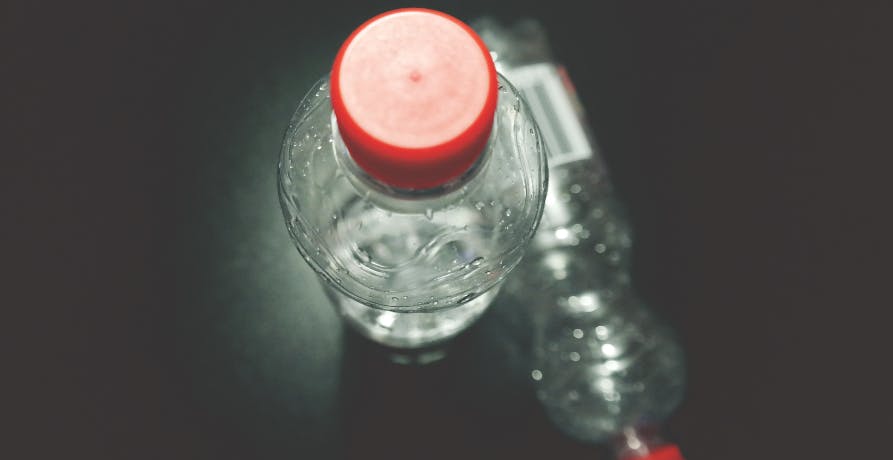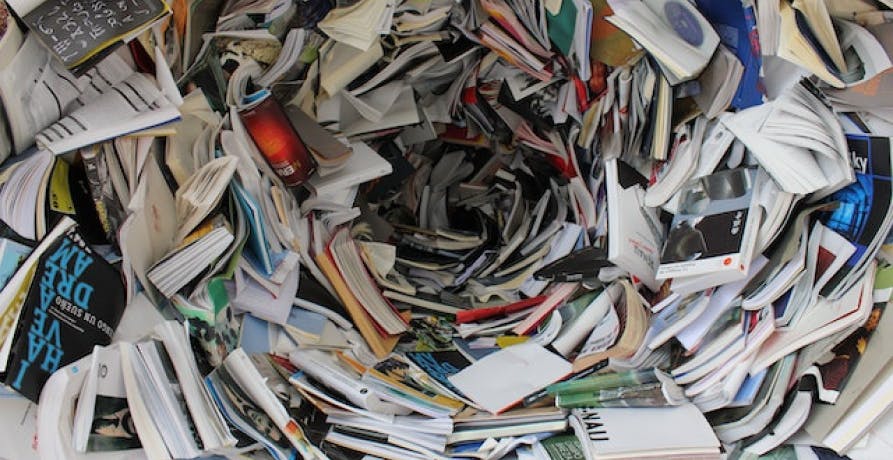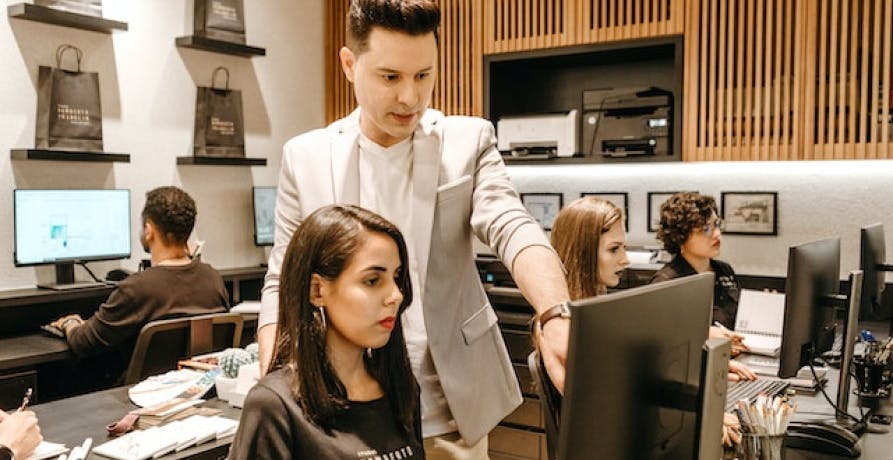
What are the 3 Pillars of Corporate Sustainability?
In this article, we'll explore what the 3 pillars of corporate responsibility are, why they're important, and how businesses can turn them into practical action.
ESG / CSR
Industries



Rising global surface temperatures aren’t the only massive problem concerning humanity and our planet. Excessive waste is also contributing to excessive greenhouse gasses and carbon dioxide emissions, and even though recycling exists – it’s not the most reliable or efficient way to mitigate overwhelming amounts of landfill.
In this article, we'll explain what the RCRA is and its main goal, how the RCRA works, and how you or your company can help to make sure that the RCRA is successful.
The Resource Conservation and Recovery Act, otherwise more commonly referred to as the RCRA, is program in the United States which works to govern the disposal of solid waste and hazardous waste – ultimately, as an effort to help reduce the greenhouse gas emissions caused by excess landfill.
Rising global surface temperatures aren’t the only massive problem concerning humanity and our planet. Excessive waste is also contributing to excessive greenhouse gasses and carbon dioxide emissions, and even though recycling exists – it’s not the most reliable or efficient way to mitigate overwhelming amounts of landfill. This is one of the many reasons why the RCRA is important in the midst of climate change.
The RCRA, also known as the Resource Conservation and Recovery Act, is a federal law that creates the regulations necessary to ensure the safe disposal of waste – such as solid or hazardous waste that could pollute the atmosphere.
👉 The RCRA also has a standardized code for defining what qualifies as hazardous waste, so that workers across various industries understand the precautions and potential protocols that must be made when disposing of various types of waste.

The RCRA first became a law back on October 21, 1976 – and acted as a supporting law to the It was an Solid Disposal Act of 1965. The Solid Disposal Act of 1965 aimed to ameliorate the ways in which solid waste was disposed.
The RCRA supported the premise of the Solid Disposal Act of 1965, such as by holding cleanup reforms in the late 90s and early 2000s. Overall, the RCRA has achieved substantial recognition for its success in encouraging the public to become more mindful of how they dispose of waste.
The momentum continued in 2001, with new RCRA reforms being established to help even more facilities understand the importance of cleaning and safe waste disposal in conjunction with the EPA. However, the second RCRA cleanup was more monumental than the first – having recruited a partnership with the Technical Outreach Services for Communities, otherwise known as TOSC, where the communities in question were able to have their waste disposal questions from certified experts.
This second RCRA clean-up led the way to establish the RCRA Brownfield pilot program – where the EPA and RCRA began to provide funding for organizations or properties seeking to become sustainable and improve their cleaning and waste disposal tactics. This was not only beneficial to the environment, but helped to stimulate economic prosperity – as the facilities were more kept and able to pique the interest of investors more easily.
👉 The RCRA has continued to evolve over the years with several funding programs and various partnerships to help spread the importance of proper waste disposal and demonstrate viable ways to safely dispose of waste.

The RCRA is important as it provides specific regulations dedicated to the disposal of hazardous waste, which no other federal law has established. Some specific guidelines that are unique to the RCRA include guidance on the properties of general hazardous waste, protocols on how to identify hazardous waste, how to manage segregation systems and generators regardless of size, how to transport hazardous waste, and how to dispose of harmful waste or store it if necessary.
While the RCRA recognizes that the disposal of hazardous waste is under the jurisdiction of the entity disposing of the waste themselves, the RCRA also recognizes that it is beneficial to have a guide to help these parties identify these types of hazardous wastes and how to properly recycle or dispose of them.
💡 Think of the RCRA as the instruction manual you get for building a new piece of furniture. Sure, it’s easier and faster to take a look at the pictures and build the piece of furniture from the visual aid – but the written instructions help to ensure that your piece of furniture is built for long-lasting durability, functionality, and safety.
The same goes for the RCRA helping facilities to properly dispose of waste: while it may seem like a simple task, the guidelines provided by the RCRA can help to make sure that these third parties don’t miss an imperative step in the process of disposing of hazardous waste.
The main goal of the RCRA is to build upon the current regulations that pertain to waste disposal – whether the in question waste being disposed of is hazardous or not.
💡 Think of the RCRA as a preemptive measure to ensure hazardous waste doesn’t harm people or the planet. It’s like being on a road trip and filling up the car with gas before you start a day of driving, even if the tank is already half full.
Why do this? To make sure you don’t end up in a dangerous situation where you’re in the middle of nowhere, and out of fuel. The RCRA does the same thing, by teaching people how to dispose of waste properly in the event the waste is hazardous and can provoke dangerous consequences.
The RCRA strives for consistency in ensuring the proper disposal of waste, and therefore – they have created a standardized code to prevent mishaps in classifying and discarding waste. A standard code for waste disposal helps to prevent incorrect storage methods, false identification of hazardous waste, and helps to ensure safe handling and transportation.
In correlation with the EPA, or the regulations set forth by the Environmental Protection Agency, the RCRA constitutes that ignitability, corrosivity, reactivity, and corrosivity as properties that qualify as hazardous waste. All companies that deal with waste, big or small, are required to comply with the regulations implemented by the RCRA.
👉 The overarching goal of the RCRA is to encourage safe and unified management and disposal of all kinds of waste to promote the importance of health, safety, and environmental protection. Waste is an inevitable part of any industry in the age of commercialized production, and the RCRA understands this and simultaneously strives to assist with the process of managing waste.

The RCRA has held successful cleanup reforms back in 1999 and 2001, but the RCRA has also been successful in confronting crucial human health concerns through guiding companies on how to store, recycle, and dispose of waste. However, the efforts of the RCRA don’t stop at the current positive effects – as the fight against climate change is more imperative than ever before.
The RCRA has done this by helping to establish new recycling patterns, help fund facilities to improve their waste management, and has aided in the creation of new policies that strive to mitigate excessive waste as well – such as the Hazardous Waste Electronic Manifest Establishment Act of 2012.
Essentially, the RCRA has been successful as a result of seeking to ensure these 8 metals are properly disposed:
👉 These 8 RCRA metals are usually found in various products, such as batteries, electronics, or even pesticides – meaning that several companies across multiple industries would benefit to follow the values depicted by the RCRA.

Sometimes, even with the RCRA and their abundant resources to help others dispose of waste – facilities still recruit the help of a waste management company to improve their skills in recycling and discarded waste. Think of it like hiring a tutor for a math class. Even though the teacher is providing all of the materials and information necessary to do well, sometimes a little extra attention doesn’t hurt to ensure success.
It can be scary to commit to the protocols of the RCRA without third-party assistance, since if the waste is disposed of improperly – it can lead to not only health and safety concerns of the employees and other humans in the surrounding areas, but become a legal liability. Therefore, it’s important to make sure that waste is properly discarded – and that’s generally much easier to do with the help of a waste management company.
Waste management companies can thoroughly explain the legislations delineated in the RCRA step by step to ensure that the environment as well as the health and safety of employees is well kept. These waste management companies might assist with identifying hazardous waste, explaining the most viable techniques for storage or transportation, and how to dispose of waste safely. Waste management companies can also help with accruing the necessary permits, insurance and licenses necessary to safely, and legally dispose of waste.
💡 However, it’s important to note that it’s still possible to adhere to the regulations of RCRA without the help of a waste management company – even in your day to day life if you aren’t a part of an industrial company where disposing of hazardous waste is imperative to human health and the environment.
How can you follow the guidelines provided by the RCRA in your business, and also in your daily life?

The best way to make sure you follow the rules, is to make sure that you know them. Therefore, the best thing any facility seeking to improve their waste management should do is to study the regulations set forth by the RCRA – and then seek to thoroughly implement those guidelines into their own cleaning practices.
Here are some ways your company can contribute to the ideals illustrated by the RCRA:
💡 However, what is important to note – is that while dealing with hazardous waste can be nerve-wracking, it can be avoided.
Sustainability can be implemented even within your own household, by mitigating the use of products that could potentially create hazardous waste. This can be done by using chemical-free cleaning products, reading the labels to buy the least-toxic product available, using all of the product to avoid using it, or only buying the amount necessary. In fact, popular cleaning products like Method aren’t only better for the environment, but they usually smell better too.
Ultimately, the Resource Conservation and Recovery Act shows us that we can mitigate the use of hazardous substances and chemicals, but even when that waste is created – there are protocols to be followed to ensure the safety and future health of our planet.
If reading this article about the RCRA and how it helps to mitigate waste has made you interested in reducing your carbon emissions to further fight against climate change – Greenly can help you!
At Greenly we can help you to assess your company’s carbon footprint, and then give you the tools you need to cut down on emissions. We offer a free demo for you to better understand our platform and all that it has to offer – including assistance with boosting supplier engagement, personalized assistance, and new ways to involve your employees.
Click here to learn more about Greenly and how we can help you reduce your carbon footprint.